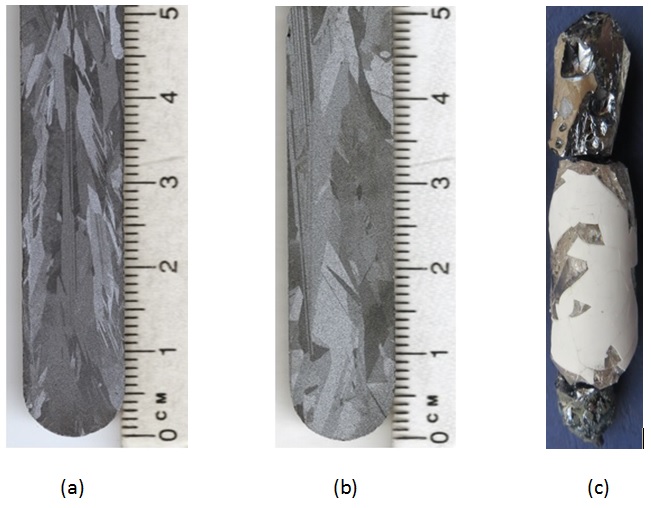| Search for content and authors |
Effects of Crucible Coating on the Quality of Multi-crystalline Silicon Grown by a Bridgman Technique |
| Vasile Pupazan , Radu-Andrei Negrila , Marius Stef , Madalin O. Bunoiu , Irina Nicoara , Daniel Vizman |
|
West University of Timisoara (UVT), Bd.V. Parvan nr.4, Timisoara 300223, Romania |
| Abstract |
Because of its low costs and its similarities with directional solidification, Bridgman growth of small diameter (max. 3cm) multi-crystalline silicon is a suitable technique for a fundamental study of the influence of growth parameters (like growth rate, temperature gradients, crucible coating) on the interface shape, grains size and impurity distribution (carbon, oxygen), which are important parameters for the photovoltaic applications. In order to study the influence of the crucible material and of the coating on the crystals quality, different growth experiments using a Bridgman set-up were performed. In this respect crucibles made in graphite and quartz were used as well as two coating materials (Si3N4and CaCl2).
Fig.1. Crystals grown in quartz crucible with different coating materials: a) Si3N4. b) CaCl2. c) no coating. Because thecoating material can have different effects on crucibles made in different materials, the use of a CaCl2 as an alternative coating material was revisited (see [1]) in the case of quartz crucibles and tested for graphite ones. Because of acting as a liquid encapsulant, calcium chloride allows the release of the silicon ingot and suppresses nucleation simultaneously, thus allowing large grain growth [1]. The first studies were devoted to observe the influence of the use of different coatings materials in order to avoid the adhesion of the Si crystal to the quartz crucible for the same set of growth conditions. It was observed that the silicon crystal was very easily released from the crucible and the grain size is higher in the case of CaCl2 coating (fig. 1.b) then in the case of Si3N4 coating (fig. 1a). The same results were obtained also by Ravishankar [1]. In the case of the graphite crucible, although the grains were also larger, the crystal could not be removed from the crucible. FT-IR spectroscopy was used in order to analyze the oxygen and carbon concentration for both cases. The study has given some clear indications about the possible benefits when a coating material is used but also on the specific problems that arose for each new type of coating-crucible combination investigated and lays the way for new investigations regarding a novel coating-crucible combination that could be of benefit for the PV industry in the future. [1] P. S. Ravishankar, Journal of Crystal Growth, 94 (1989) 62-68 |
| Legal notice |
|
| Related papers |
Presentation: Poster at 17th International Conference on Crystal Growth and Epitaxy - ICCGE-17, Topical Session 5, by Madalin O. BunoiuSee On-line Journal of 17th International Conference on Crystal Growth and Epitaxy - ICCGE-17 Submitted: 2013-04-15 01:07 Revised: 2013-07-25 12:24 |